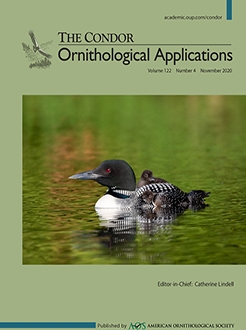Of the approximately 716 bird species that breed in North America, 386 (54%) are considered Nearctic–Neotropical migrants by the U.S. Fish and Wildlife Service. In the past 50 yr, scores of these migratory species, including some once considered common, have declined dramatically. Nearctic–Neotropical migrants normally spend 6–8 months in tropical habitats, making the identification, availability, and management of Neotropical habitats critical issues for their conservation. Yet, for most species, complete and nuanced information about their use of tropical habitats and the relative effects of breeding vs. wintering conditions on survival, productivity, and population trends is not available, though many studies point to Neotropical overwintering habitats as being a strong driver of population change. Particularly important for long-distance Nearctic–Neotropical migrants is an understanding of how “carry-over effects” arise and influence population trends when conditions on wintering grounds and tropical stopover areas affect subsequent reproductive performance on breeding grounds. For example, why some species show strong carry-over effects from tropical habitats while others do not is not fully understood. In recent years, many studies have offered insights into these issues by taking advantage of new scientific methods and technological innovations. In this review, we explore threats facing North American breeding birds that migrate to the Neotropics, summarize knowledge of habitat selection and use on the wintering grounds, describe how conditions at one point in the annual cycle may manifest in subsequent seasons or life history stages, and discuss conservation concerns such as climate change and the potential for phenological mismatch.
LAY SUMMARY
More than half of the bird species that breed in North America, representing billions of birds, migrate to the Neotropics.
In the past 50 years, scores of these species have declined dramatically.
Migratory birds normally spend 6–8 months in tropical habitats, making the conservation of these species an international challenge. Yet, for most species, complete and nuanced information about their use of tropical habitats and the relative effects of breeding vs. wintering conditions on survival, productivity, and population trends is not available.
Accelerating climate change is adding to the urgency of our gaining an understanding of the full annual and migratory cycle of these birds.
In recent years, many studies have offered insights into these issues by taking advantage of new scientific methods and technological innovations.






